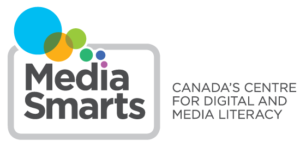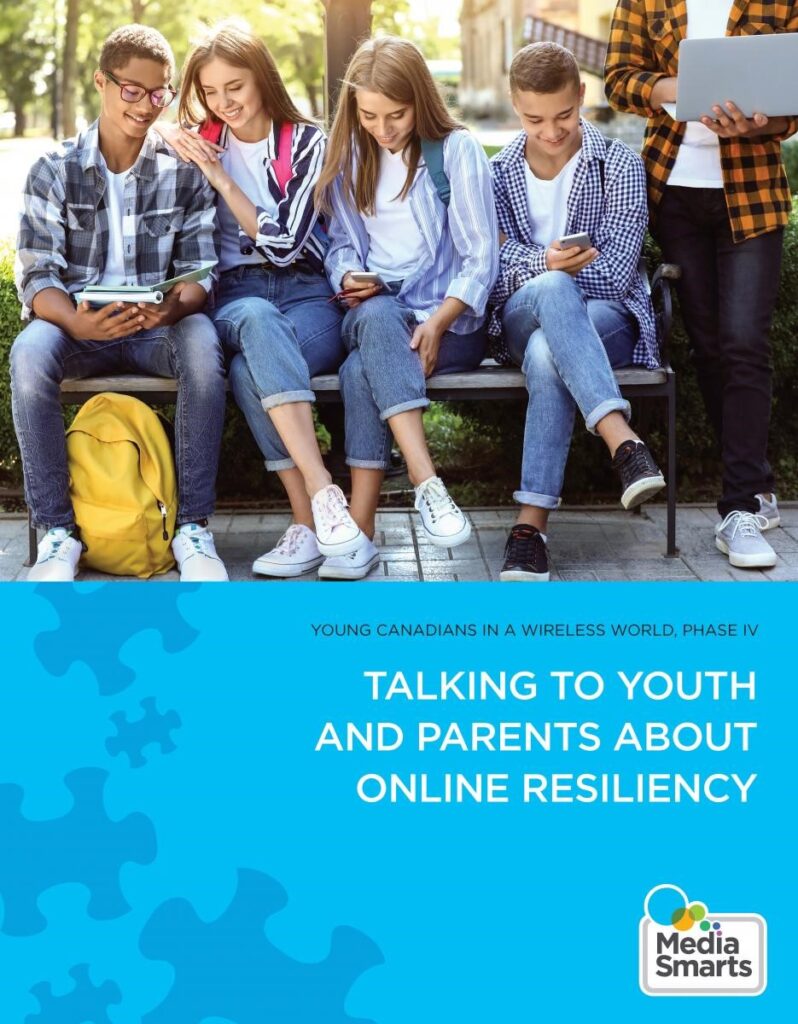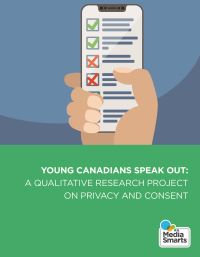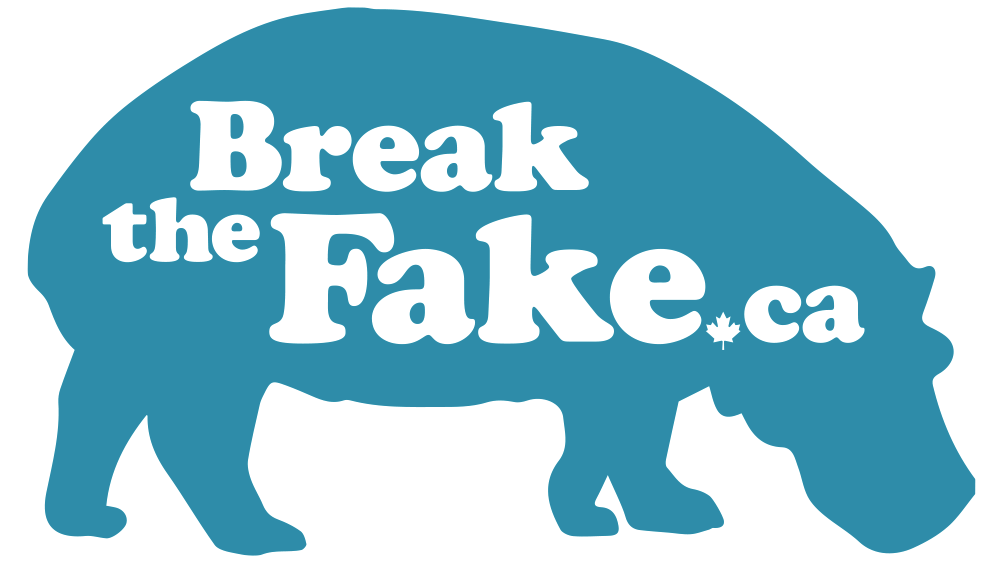
An interview with Dr. Kara Brisson-Boivin, Director of Research, and Matthew Johnson, Director of Education, MediaSmarts
MediaSmarts / HabiloMédias has been developing digital and media literacy programs and resources for Canadian homes, schools and communities since 1996. Their work falls into three main areas: Education, Public Awareness, and Research and Policy. CSL Journal is very pleased to have this conversation with MediaSmarts experts about their latest research and educational resources.
 |  |
CSL Journal: Thank you so much for agreeing to this interview. MediaSmarts’ vision is that children and youth need to have the critical thinking skills to engage with media as active and informed digital citizens. MediaSmarts conducts “made in Canada” research to inform public policy and provides extensive educational resources to support students, teachers, and families.
Your work is extremely important, and never more so than now, when the pandemic has made online learning ubiquitous. Combine that with the chaotic nature of world events and media, students, teachers, and families need support. We take this opportunity to explore your most recent research and educational resources, and to seek your insight into navigating media and online learning during this pandemic crisis and into the future, post-pandemic.
But let’s start pre-pandemic. Early in 2020, MediaSmarts released the results of Phase IV of your research study, Young Canadians in a Wireless World (YCWW). Earlier phases of this study have provided great insight into what students are actually doing with technology as opposed to what many adults thought or even feared they were doing. Your research has been very useful for informing instructional approaches. Phase IV focuses on online resiliency, considering social, environmental and technological factors that enable, and in some cases inhibit effective use of online technologies. The study emphasizes the need to move from individual to collective resiliency. Could you explain this concept?

Kara Brisson-Boivin: Resiliency, as a corrective for online challenges, has come to characterize much of the parenting, educational, and technological resources for understanding digital technology in the lives of young people. Resilience literature often presents a tension between risks and opportunities associated with digital technology, however the responsibility for managing this tension is more often than not, placed on parents, teachers, and youth themselves. We wanted to examine the efficacy of this individualizing approach to online resilience with youth and their parents and whether or not the expectation that youth will ‘bounce back’ from the challenges they encounter online is relevant and sustainable. The results of our conversations reminded us of how important it is to listen to young people who are uniquely positioned to let adults know what the online world looks like and how we can help them make the most of it. The youth we spoke with provided several examples of the importance of emphasizing the social, environmental, and technological factors – the structural factors – at play in their online lives. Which is why we wanted to push thinking on online resilience beyond individual resilience to collective resilience. Collective resilience specifically in an online context, refers to a young person’s ability to: participate in safe and inclusive online communities, draw strength and support from the community around them, foster trust, and engage in meaningful dialogue. The hope being that we tackle online adversity through a more holistic understanding of how to foster digital well-being amongst youth.
CSL Journal: Students participating in the study’s focus groups recognized school as a main enabling environment for using technology, giving access to quality online resources and enabling collaboration and communication. At the same time, students commented on the surveillance culture that frequently predominates in the school context. Could you give some examples of this surveillance culture and how students feel about it?
Kara Brisson-Boivin: While school was clearly the predominant enabling environment for students to access and engage with technology students expressed a tension in the surveillance mechanisms utilized by schools and educators which often frustrated them. For example, in many cases students were not allowed to use their own devices, which they were more adept and comfortable using, but had to use school approved devices and for some students, this posed a bit of a learning curve to become comfortable with operating that device. More often than not though, students were describing ‘technical fences’; software, firewalls, passwords, and other forms of restricted access. For example, many sites that students regularly use at home for research and homework, such as YouTube, are blocked by school intranet. Students found it frustrating that their access to information was limited by their educational environment.
Matthew Johnson: Our earlier research shows that this is a concern for teachers too – many of them say they’ve had difficulty accessing educational content because of filters, either accessing it themselves to show to students or having students access it.
Kara Brisson-Boivin: Finally, students were particularly concerned by the level of surveillance that educational apps and platforms provided educators and the corporations that owned these apps—what we call the corporatization of the classroom in the report. For example, while Google classroom and Gmail afforded students more opportunities to work collaboratively and to communicate directly with their teachers, students also described it as ‘scary’ that their educators were monitoring the platforms where they communicated. Students often described having to communicate for two audiences, their peers and their teachers, and many pushed back against this sort of surveillance by addressing emails to their intended audiences and adding ‘Hi everyone else’ to let the adults know they knew that they were listening. Students almost uniformly described corporate monitoring by educational app and platforms (i.e. Google, Class Dojo, Edsby) as ‘creepy’ and they had serious concerns about the consequences of how their school work and actions as young students were being monitored, tracked, and potentially referenced in future. The ‘creepiness’ students associated with adult (educator and corporate) monitoring of their learning and behaviour reduced their trust in both the technology and their teachers.
CSL Journal: Having followed MediaSmarts’ research for many years, I must say that I’m not surprised by students’ concerns about surveillance. Why don’t adults trust kids to behave properly online?
Kara Brisson-Boivin: It wasn’t entirely surprising to us that students expressed concerns about surveillance either as it’s been a consistent theme throughout our young Canadians research. Especially since they often experience surveillance as an uneven relationship of being surveilled and ‘watched’ by adults (parents/guardians, teachers, corporations, etc.) while having little-to-no control or authority to do any watching themselves. Some of this surveillance stems from lingering (albeit debunked) myths about children and youth’s activities online (what you’ve described in the next question) that kids share too much online or are unconcerned about their privacy. However, our 2018 research with Canadian families (parents and guardians of children birth to fifteen years old) The Digital Well-Being of Canadian Families, uncovered an interesting trend when it comes to digital parenting or parenting in an online context. Parents told us that while they want to provide their children with as many opportunities and online benefits as possible, they also feel a social pressure to appear stricter.
In other words, while parents want to provide the support and trust necessary for youth to build resiliency there is a legitimate and understandable fear (stemming from a variety of online and offline sources) that prevents them from doing so. Parents/guardians described being overwhelmed by what is presented to them as the ‘dangers of the internet’. Just as resiliency places the onus on youth to ‘bounce back’, it similarly places the onus on parents to piece together the digital literacy puzzle in a climate ripe with fears of online toxicity, and fatigue in managing young people’s media use. For years, MediaSmarts has recommended an approach to online parenting that draws on a variety of strategies for meaningful engagement with children as they use digital technology cultivating open dialogue, empowerment, and trust all of which are important elements for fostering collective resilience and enhancing digital well-being amongst children and youth.
Matthew Johnson: I think parents are also motivated by a fear that’s caused in part by misleading or misrepresentative media coverage of online safety issues. Some of the parents in our focus groups have said that if it were up to them, they wouldn’t spy on their kids, but that if something bad happened and people found out they hadn’t been spying they’d look irresponsible. That’s one of the reasons why media and digital literacy are two sides of the same coin, and also why we never use “scare tactics” in our materials.
CSL Journal: One of the myths that Phase III of the YCWW study (2014) debunked was the perception of many adults that kids shared far too much online and were unconcerned about privacy. You learned then that audiences matter to kids, and that they were very concerned about controlling who should and who should not be able to see what they posted online. Your recent research study, Young Canadians Speak Out: A Qualitative Research Project on Privacy and Consent (2020), revealed that when students discovered that they have an unanticipated audience because of data collection algorithms they are quite shocked and concerned.
Should information and media literacy instruction today include algorithmic literacy? How can educators approach this topic?
Matthew Johnson: Algorithms have become a central part of our lives, including our media experiences. Unlike traditional media, though, the role they play is not always obvious, and the decisions they make generally aren’t transparent. As a result young people don’t generally understand how a search engine sorts the results to a query, or how a video site decides what videos to show them next, and as a result they tend to wrongly assume that these are markers of legitimacy or reliability. As with most aspects of digital literacy, algorithms need to be addressed through both a technical and an ecosystem approach: students need enough technical knowledge to understand how algorithms shape their online and offlines and to be able to ask critical questions about that, but they also need the broader picture to ask questions about why platforms rely so heavily on algorithms and what the implications of that are for other aspects of digital literacy, such as privacy and misinformation.
Kara Brisson-Boivin: Drawing on Matthew’s response above: providing youth with at least the basics of algorithmic literacy (the what/how and the why) will allow youth to express concerns that may be unique to them and to engage in meaningful conversations with technology and policy developers when it comes to the impacts of algorithms in their online and offlines. Otherwise, and as it currently stands, youth are often excluded from these conversations.
CSL Journal: I was fascinated by students’ re-invention of Terms of Agreement consent forms in the focus groups for this study. Students were genuinely surprised by what they had actually agreed to when consenting to the complex and wordy terms of service that are ubiquitous on the web. Do online service providers have a responsibility to simplify consent agreements so that users actually understand what they are agreeing to? What should this look like?
Kara Brisson-Boivin: Yes, platforms have a responsibility to ensure that they are collecting meaningful consent from users. Following the guidelines from the Office of the Privacy Commissioner(2018), this requires that organizations and platforms develop a consent process that confirms that a person has a comprehensive understanding of what will happen with their personal information, or data, that they provide to online platforms. Research in the field of privacy and data collection tells us that the existence of online privacy policies does not necessarily correlate with an understanding of a platform’s information practices especially since many of us simply click ‘Agree’ without carefully reading the privacy and consent terms of service. In our research, youth were resigned to the notion that they must ‘pay to play,’ and the currency is their personal information. Given this and since more youth are participating in online spaces without direct parental supervision or guidance, it is very important that we encourage the development of processes that enhance understanding of online privacy and consent.
The youth in our research provided some fantastic examples of consent processes that would meaningfully engage with users, particularly youth users, and provide them with privacy and consent practices that recognize the distinct needs of youth by:
- Making policies easier to read and understand (i.e. simplifying text, highlighting key points)
- Verifying that consent is genuinely understood (i.e. requiring users to click through the text, using pop-up reminders)
- Providing users with more control over what data is collected (i.e. just in time notifications and unbundled consent policies)
- Making it easy to revisit consent (i.e. the right to be forgotten, making it easy for users to fully remove their data)
- Being transparent about why data is collected and how it is used (i.e. promising not to sell data to third parties is a selling point for youth).
In this project, youth engaged in a prototype/design activity where they worked with the MediaSmarts team to develop consent policies. If this is of interest for this piece digital (graphic) depictions of their prototypes can be viewed here: https://mediasmarts.ca/research-policy/young-canadians-speak-out-qualitative-research-project-privacy-consent
CSL Journal: The YCWW Phase IV study (2020) explored the conflict between parental / educator control and students’ ability to use technology creatively, for self-expression and community engagement. You found that the key element was trust, and that the biggest barrier to resiliency is lack of privacy. How do we achieve balance between the need to protect kids while respecting their privacy and trusting them to do the right thing?
Kara Brisson-Boivin: This is a really challenging question and I don’t think there is a magic formula, unfortunately. The key element, which both parents and youth emphasised in their own way, is indeed trust. In order to allow youth to creatively explore, engage in self-expression and identity play—all important elements of development— with and through technology the adults in young people’s lives need to trust them and provide them with some privacy. Trust (and privacy) is not something that parents felt came at a certain age (i.e. my child is 12 and now can engage online without any parental supervision) but rather, through demonstrating positive behaviour and trustworthy characteristics especially in their offline lives. For example, youth often explained that when they demonstrate to their parents/guardians that they are managing their expected roles and responsibilities as students (such as completing homework on time), they are engaging pro-socially with peers, and they are demonstrating a multiplicity of interests (beyond simply online engagement) they are afforded more freedoms and privacy online. In other words, building trust in an offline context helps them to earn trust in an online context, affording them more freedoms and privacy. Trust is a constant work-in-progress for youth and their parents/guardians.
Matthew Johnson: It’s also important to point out that while kids value their privacy, they do want their parents involved in their lives. One phrase that comes up a lot is that they want their parents to be there to support them — to have their back — without constantly looking over their shoulders.
CSL Journal: One of the findings of Phase III (2014) of the YCWW study was that students want to learn more about information and media literacy, but that they are not receiving consistent instruction at school. Has anything changed since then?
Matthew Johnson: The data from Phase IV, which we’re just collecting now, will give us a better answer, but based on what we know so far the picture is mixed. One of the ways that we help teachers bring digital and media literacy into the classroom is to keep track of how those are represented in provincial and territorial curricula, and there has been a gradual move over the last few years to update curriculum to reflect the importance of digital media and technology in students’ lives. At the same time, students continue to tell us that they get very little instruction in digital literacy issues. It’s important not to blame teachers – our research with them shows that they recognize the importance of teaching these topics – but to give them the support they need to bring digital and media literacy into their classrooms.
CSL Journal: Your most recent research was published at the beginning of 2020, just prior to the declaration of the worldwide COVID-19 pandemic. That pandemic threw schools across the country into emergency remote learning and a sudden and dramatic shift from in-school to online instruction. What have been the most dramatic effects of this shift that you have observed?
Matthew Johnson: The pandemic has accelerated some things and made other issues more visible. Cyberbullying is a good example of the latter – a recent Canadian study found that it is the only form of bullying that hasn’t declined during the pandemic – and online education has also demonstrated more clearly the ways in which digital communication can keep us from feeling empathy in situations where we normally would because of the absence of cues such as tone of voice, body language or facial expression, as well as the disembodied experience of communicating virtually (which can make it harder for us to identify our own feelings.) It’s also forcing us, as a society, to question the idea of “screen time” – a term we’ve been moving away from for several years – and move towards a more nuanced understanding of the different kinds of screen use, and ways of encouraging positive use and limiting solitary and sedentary time.
Kara Brisson-Boivin: I would echo Matthew’s comments and emphasize the point about ‘screen time’ being re-evaluated as a useful concept. Research is moving away from a question of ‘how much’ to questions of for what, why and how. As Matthew has said emphasizing the different ways we are interacting with digital technology, and I think it’s important that we are gentle with ourselves and our children when it comes to screen use during these challenging and unprecedented times.
I would also add that there is an increased focus on online data privacy and protection especially given how so much of our lives have migrated online. There is certainly an increased concern regarding the corporatization of the classroom I’ve spoken to above and how families are downloading new and sometimes unfamiliar educational apps to help their children in the transition to remote or distance learning. There are a lot of unanswered questions regarding the privacy and data protection implications of these platforms and research is just underway to investigate some of those consequences now.
CSL Journal: As I heard someone comment recently, when the pandemic is over there is no way we should try to go back to how things were in 2019. What do you see as the long-term implications of pandemic learning contexts for changing how we educate students post-pandemic?
Matthew Johnson: One impact we’re seeing is that schools and school boards are moving from allowing teachers to make ad hoc decisions about classroom technology to mandating the use of particular tools and platforms. This doesn’t automatically mean that better choices are being made about respecting student privacy, or other issues that come up with using technology to connect teachers, students and parents, but schools and boards are at least more likely to have the resources to address those questions. The downside of that, of course, is that parents and students now have less room to opt out if they don’t like the privacy implications of the platform their school is using.
I think in the long term the impact on younger students will be relatively small, but secondary students will likely see more of their education happening virtually, especially in situations like credit remediation classes. (This is something the Ontario government, at least, had already planned prior to the pandemic, but it can now be rolled out as a continuation of an existing program instead of something new.)
Kara Brisson-Boivin: One other thing to keep in mind, and drawing on Matthew’s comment above about the prevalence of remote learning (post-pandemic), is how this has exacerbated or exposed the digital divide in Canada. Digital divides are embedded in social, economic, and cultural contexts, and intersect with categories of race, class, gender, and age. For example, a recent (2020) CBC article notes that in First Nations communities, just 30 percent of households have internet connections with the recommended speed required to participate in online school/work or to access health care and important health information. MediaSmarts’ research emphasizes that access to technology as well as access to reliable information and material from a diversity of sources is the precondition for digital literacy. While there remains much work to be done in providing youth with meaningful access to digital technology, access is the first step or the starting point for developing the digital literacy skills needed for ethical digital citizenship and online agency. Digital literacy is of course more than technological know-how (the hard skills): it includes a variety of ethical, social, and reflective practices (the soft skills) that are essential to developing online resilience and are embedded in work, learning, and daily life.
CSL Journal: Well you are talking with school library professionals for this interview, and of course competencies around information and media literacy are at the core of the library instructional program. How can teacher-librarians in particular integrate media literacy skills as they collaboratively co-teach with their colleagues across all areas of the curriculum?
Matthew Johnson: Librarians, and teacher-librarians in particular, have been key partners for MediaSmarts from the beginning and play a key role in bringing digital and media literacy to the classroom. As I mentioned earlier, teachers generally recognize the importance of teaching students about these issues, but often don’t feel confident in addressing them, don’t know where they fit in curriculum, or are concerned about the risks of bringing digital technology or pop culture into the classroom. Just as teacher-librarians have a long history of supporting teachers in addressing research skills – a topic that’s more important than ever – they can be champions for media and digital literacy skills in their schools.
CSL Journal: MediaSmarts offers extensive educational resources for students, teachers, and parents. What are the hot topics now, and what resources from MediaSmarts do you particularly recommend?
Matthew Johnson: The current hot topic is definitely verifying online information: our 2018 study of Canadian parents found that was actually the top concern for their kids online, ahead of issues like cyberbullying and sexting. Our recent Break the Fake program is built around an update of the classic House Hippo PSA and has resources that start with teaching kindergarten and primary students the basics of media literacy and then provide students at different grades, up to the end of the secondary level, lessons in how to verify what’s real online that are appropriate for their age and online activities.
For teachers or teacher-librarians who are just getting started with digital and media literacy, our Media Literacy 101 and Digital Literacy 101 programs are essential. These include videos that introduce the key concepts of digital and media literacy, lessons that explore those concepts at different grade levels, and professional development materials that can be presented to colleagues or explored individually online. Our Digital Literacy Curriculum Framework provides teachers with a comprehensive series of lessons in seven aspects of digital literacy, ranging from kindergarten to Grade Twelve, and our charts of Digital and Media Literacy Outcomes by Province & Territory help to show how media literacy can be integrated across the curriculum.
CSL Journal: Thank you so much for sharing your insights with us. We cannot overemphasize the importance of integrating digital and media literacy across the curriculum. This is at the core of the school library learning commons instructional program. We are so grateful for the role that MediaSmarts plays in conducting research in Canada and in providing such a wonderful body of resources. We strongly encourage our readers to make MediaSmarts their go-to source.

Kara Brisson-Boivin, PhD is the Director of Research for MediaSmarts. Kara is responsible for the planning, methodology, implementation and dissemination of key findings from original MediaSmarts research studies. Kara holds an appointment as an Adjunct Research Professor in the Sociology and Anthropology Department at Carleton, University. She has extensive experience presenting research to key stakeholders on parliamentary committees, at academic conferences, invited talks, panels, keynote addresses and webinars. Kara has been interviewed about her research by outlets such as the CBC, CTV, The Globe and Mail and the Canadian Press.

Matthew Johnson is an acknowledged expert in digital and media literacy and has contributed blogs and articles to websites and magazines internationally as well as presenting MediaSmarts’ materials on topics such as copyright, cyberbullying and online hate to parliamentary committees, academic conferences, governments and organizations around the world, frequently as a keynote speaker. He has been interviewed by outlets such as The Globe and Mail, the BBC, The Wall Street Journal, Radio Canada International and CBC’s The National.
This interview was conducted by Anita Brooks Kirkland, co-editor of CSL Journal and chair of the CSL Board of Directors.



